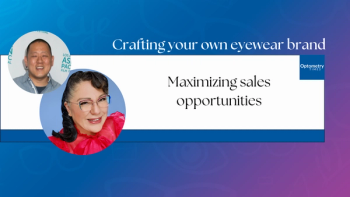
October is Home Eye Safety Awareness Month
Help your patients avoid eye injuries at home. Prevent Blindness America has declared October as Home Eye Safety Awareness Month because more eye injuries occur in and around the home.
Chicago-Each year in the United States, more than 2.5 million eye injuries occur, and 50,000 people permanently lose part or all of their vision, according to the
Because more eye injuries occur in and around the home, Prevent Blindness America has declared October as Home Eye Safety Awareness Month to help educate the public on steps that can be taken to avoid painful and costly injuries. Find information for your patients on the organization’s dedicated Web page:
Eye injuries can occur from a variety of common sources, such as flying debris from lawn mowers or trimmers or splashes from household cleaners, paints, or solvents. Prevent Blindness America urges everyone to wear protective eyewear approved by the American National Standards Institute (ANSI) when performing household activities. The eyewear should have the “Z-87” logo stamped on the frames.
Knowing what to do for an eye emergency can save valuable time and possibly prevent vision loss. Prevent Blindness America offers a free First Aid for Eye Emergencies sticker in both English and Spanish that can be placed on the inside of a medicine cabinet. Basic eye injury first aid instructions include:
Chemical burns
- Immediately flush the eye with water or any other drinkable liquid. Hold the eye under a faucet or shower, or pour water into the eye using a clean container. Keep the eye open and as wide as possible while flushing. Continue flushing for at least 15 minutes.
- DO NOT use an eyecup. DO NOT bandage the eye.
- If a contact lens is in the eye, begin flushing over the lens immediately. This may wash away the lens.
- Seek immediate medical treatment after flushing.
Specks in the eye
- DO NOT rub the eye.
- Allow tears wash the speck out or use an eyewash.
- Try lifting the upper eyelid outward and down over the lower lid.
- If the speck does not wash out, keep the eye closed, bandage it lightly, and see a doctor.
Blows to the eye
- Apply a cold compress without putting pressure on the eye. Crushed ice in a plastic bag can be taped to the forehead to rest gently on the injured eye.
- In cases of pain, reduced vision, or discoloration (black eye), seek emergency medical care. Any of these symptoms could mean internal eye damage.
Cuts and punctures
- DO NOT wash out the eye with water or any other liquid.
- DO NOT try to remove an object that is stuck in the eye.
- Cover the eye with a rigid shield without applying pressure. The bottom half of a paper cup can be used.
- See a doctor at once.
Newsletter
Want more insights like this? Subscribe to Optometry Times and get clinical pearls and practice tips delivered straight to your inbox.













































